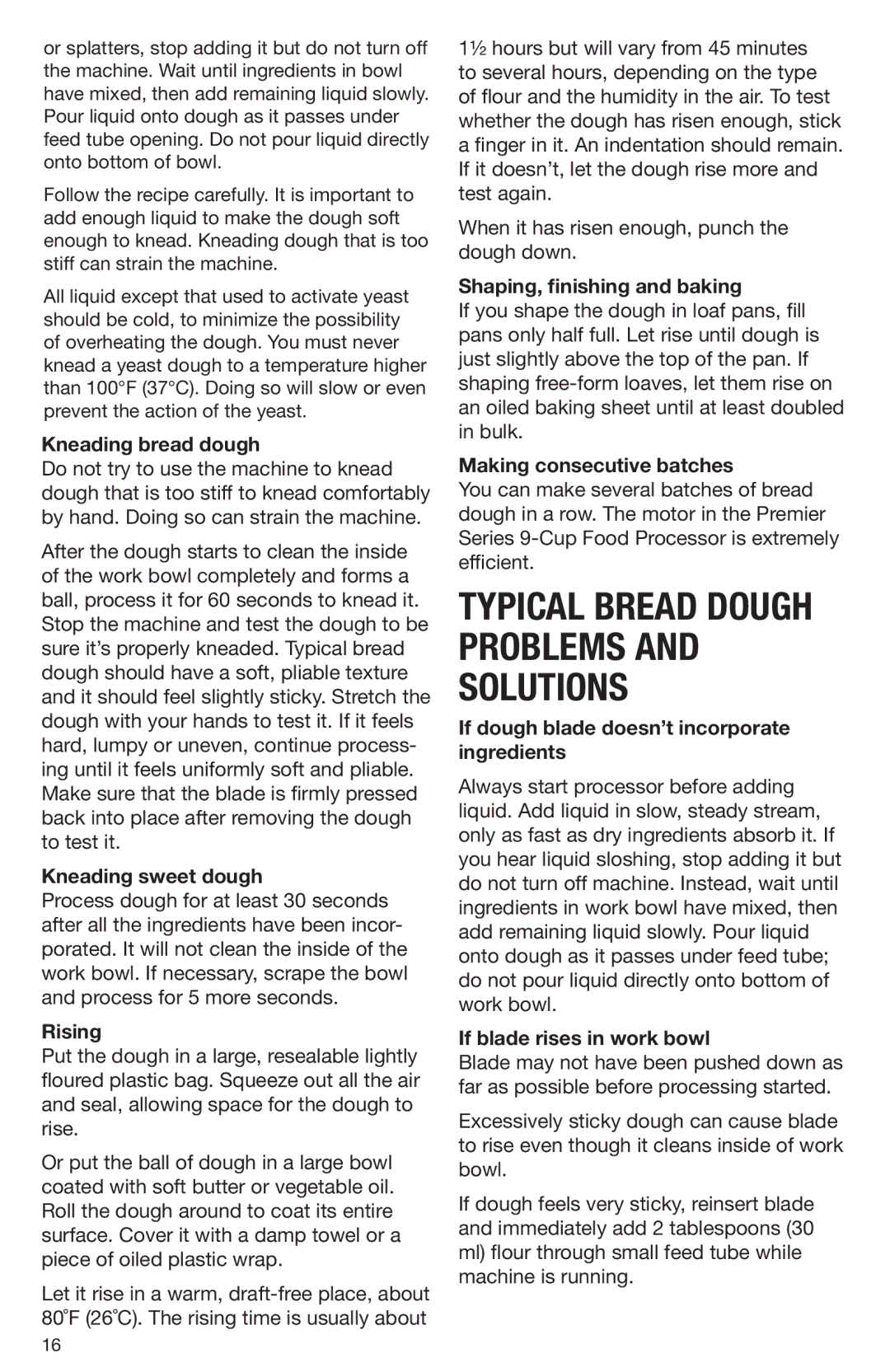DLC-2009CHB specifications
The Cuisinart DLC-2009CHB is an innovative food processor designed to streamline food preparation and elevate culinary experiences in the kitchen. Renowned for its efficiency, outstanding performance, and user-friendly features, this food processor has become a staple for both amateur cooks and culinary professionals.One of the standout features of the DLC-2009CHB is its powerful 600-watt motor, which provides impressive speed and performance for various food processing tasks. Whether you are chopping vegetables, slicing fruits, or preparing dough, the motor ensures that everything is done quickly and effortlessly. The processor comes with a generous 9-cup capacity bowl, allowing users to handle large quantities of ingredients at once, making it ideal for meal prepping or entertaining.
The Cuisinart DLC-2009CHB is equipped with a versatile set of stainless steel blades and discs that enhance its functionality. The slicing disc, shredding disc, and chopping blade make it easy to achieve a range of textures and presentations. The food processor also features a patented "SealTight" lid and bowl design that locks in freshness and prevents spills during processing, ensuring a hassle-free cooking experience.
Another significant highlight of this model is its simple and intuitive controls. With just a push of a button, users can choose between pulse or continuous processing modes, allowing for precise control over texture and consistency. The food processor includes a mixing/dough blade for those who enjoy baking, making it easier to mix ingredients for bread, pastry, and other baked goods.
In terms of design, the Cuisinart DLC-2009CHB boasts a sleek and modern aesthetic that complements any kitchen decor. Made from durable materials, it is built to last, ensuring years of reliable use. Additionally, the parts are dishwasher safe, making cleanup a breeze.
In summary, the Cuisinart DLC-2009CHB food processor is a high-performance kitchen appliance that combines power, versatility, and durability. With its robust motor, effective blades, user-friendly design, and convenient features, it empowers home chefs to explore new culinary possibilities and elevate their cooking game. Whether you are preparing everyday meals or experimenting with new recipes, this food processor is an invaluable tool that can make the kitchen experience enjoyable and efficient.
